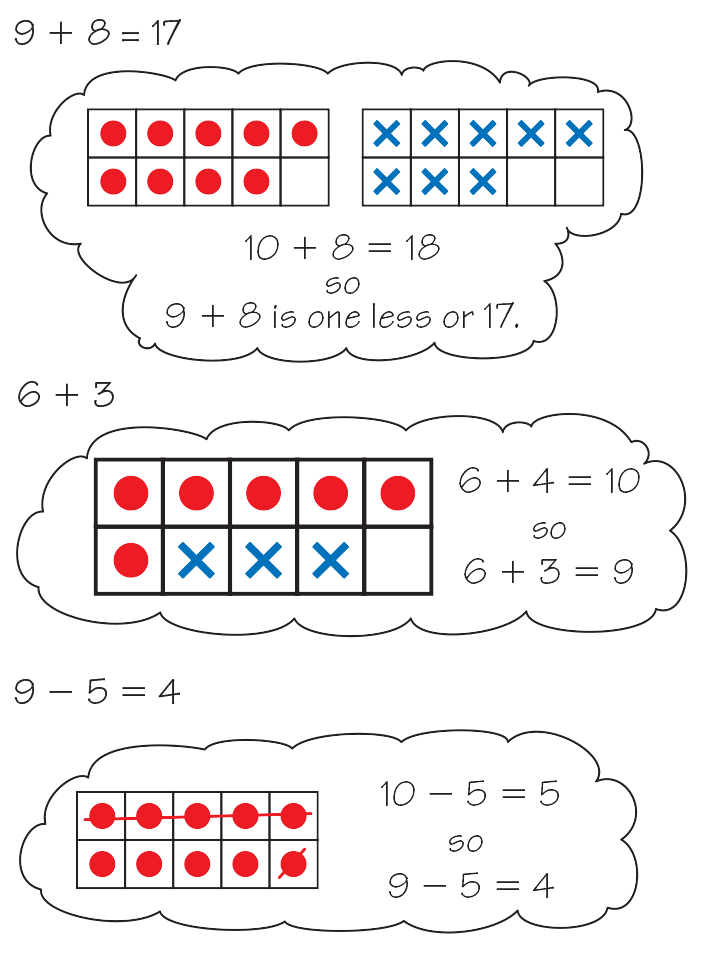Students revisit the Addition Strategies chart made in Lessons 1–3 and discuss which strategies seem better suited to solve each fact. They then summarize those strategies into an Addition Strategies Menu for Small Numbers. Students revisit games and activities from previous lessons to choose practice that will help them develop strategies for the addition facts with sums to ten.
Content in this Lesson
- Representing addition and subtraction using stories, drawings, counters, number sentences, number lines, or ten frames [E2].
- Using strategies that apply the properties of addition (e.g., turn-around, zero) to solve addition and subtraction problems [E4].
- Adding and subtracting within 10 using invented, counting (e.g., counting on, counting up, counting back), and reasoning (e.g., making ten, using ten, using doubles) strategies [E7].
- Using tools to represent reasoning or solution strategy [MPE2].
Assessment in this Lesson
| Assessment | Expectation Assessed |
|---|---|
| Addition Practice Menu Self-Assessment Student Activity Book Page 143 |
|
| DPP Item Q Stories Teacher Guide - digital |
|
| DPP Item R Addition Facts Teacher Guide - digital |
|



















